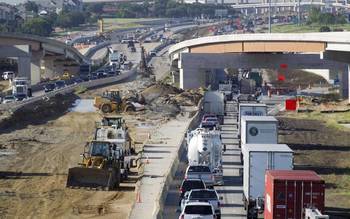The truck driver shortage has placed a difficult burden on America’s truck drivers. Incidents of fatal truck driving accidents and difficult challenges demonstrate that the hard-working men and women of America’s roads and highways take considerable risk.
Every year, thousands of lives are lost to accidents involving semi-trucks. According to the Insurance Institute for Highway Safety, in 2018 there were 4,136 deaths associated with large trucks. This may be concerning to many truck drivers. Fortunately, knowing the numbers can help you be careful about avoiding the most common factors in trucking accidents.
Jump to Infographic: Statistics Point To Key Factors In Truck Accidents
Where Trucking Accidents Occur
Although the nature of truck driving jobs requires that truck drivers spend a lot more time on the road than the average passenger car driver, trucks are less likely to get into accidents. According to the U.S. Department of Transportation, the majority of fatalities involving a large truck are occupants of smaller passenger vehicles.
If we look back at incidents that occurred during the late 1970s, death tolls shot up from 4,305 in 1975 to 6,539 in 1979. Safety standards and policies helped to bring that number almost steadily down to a low of 3,147 in 2009 with truck occupant death declining to 14 percent; however, more recent reports available for 2018 show the incident rate has climbed to 4,136.
The reason passenger vehicle occupants suffer a high number of deaths is simple physics. When collisions occur, cars and other small vehicles are at a significant size and weight disadvantage. A rig often outweighs a passenger vehicle by 20-30 times. Since semi-trucks have much higher ground clearance, a small car can basically be swallowed up under the trailer.
Braking capabilities also differ greatly. A Mini Cooper may be able to stop on a dime. A fully loaded 18-wheeler requires anywhere from 20-40 percent more distant to affect a complete stop. Bad weather conditions can also make braking and slowing riskier.
Truck driving accidents are more likely to occur on smaller roads. According to the National Highway Traffic Safety Administration, 381,714 accidents involving trucks happened on non-interstate roads in 2018. By comparison, only 117,356 happened on interstates.
The overwhelming majority of all accidents were property-damage-only (387,863 of 499,070). Accidents on interstates were slightly more likely to be fatal at a rate of 1% compared to 0.84% on non-interstates. This is likely due to the higher speeds.
Most and Least Dangerous States
Clearly, some states are safer than others to drive in. According to the Insurance Institute for Highway Safety (IIHS), in 2018 the number of fatal crashes per 100,000 people ranged from 4.4 (in D.C.) to 22.2 (in Mississippi). These were the five best states for fatal crash rates with their rate per 100,000 people and total fatal crashes:
- District of Columbia - 4.4 (30 total)
- New York – 4.8 (889 total)
- Massachusetts - 5.2 (343 total)
- Rhode Island - 5.6 (56 total)
- New Jersey - 6.3 (525 total)
These were the five worst states for fatal crashes:
- New Mexico – 18.7 (350 total)
- New Mexico – 18.7 (350 total)
- Alabama – 19.5 (876 total)
- South Carolina – 20.4 (970 total)
- Mississippi – 22.2 (597 total)
Factors in Truck Accidents
 Accidents can be caused by all manner of factors. Passenger vehicle driver error was involved in about half of all truck driving accidents and truck driver error in about a third of crashes. Keep in mind that multiple factors may be involved in each crash.
Accidents can be caused by all manner of factors. Passenger vehicle driver error was involved in about half of all truck driving accidents and truck driver error in about a third of crashes. Keep in mind that multiple factors may be involved in each crash.
- Speeding: Unsurprisingly, speeding is a factor in a large number of crashes. It was involved in over a quarter of all fatal accidents in 2018. Not only does speeding increase the likelihood of an accident, but it also increases the severity. Be cautious about your speeds and avoid rushing. It is better to be late to a destination than to never make it at all.
- Distraction: A 2009 study by the FMCSA discovered that distraction was involved in 71% of commercial vehicle crashes. That incredible number underscores how significant a problem distracted driving is. Today more people have smartphones than in 2009, increasing the likelihood of distraction on the road.
- Fatigue: The federal government imposes strict rules about when drivers can work and for how long. Unfortunately, many people try to skirt around the rules. Take them seriously as fatigue is a major component in crashes.
- Substance Abuse: Sadly, substance abuse is an all too common problem. Around a quarter of all crashes involve illegal or prescription drug use. Substances like drugs and alcohol can significantly impair your ability to drive. Be safe and stay sober.
- Blind Spots: Although training to check blind spots is fundamental, small vehicles, motorcycles and weaving drivers pose a significant challenge for truckers. Blind spots contributed at a rate of 14 percent.
- Unfamiliar Roadways: Contributing to 22 percent of all accidents, decision-making can be slowed when attempting to navigate new highways and roads.
Mechanical Issues Involved in Accidents
Only around 5% of the large trucks that got into fatal crashes in 2017 had a vehicle-related factor. Nearly all truck accidents were caused by driver-related factors or outside circumstances. Nonetheless, regular semi-truck maintenance can help to minimize the likelihood of a crash.
Tires were the most common cause of accidents. Anyone who has seen the aftermath of a truck blowout on the highway knows how serious these problems can be. Make sure to check tire pressure often and change tires whenever you notice any damage.
The brake system was the second most common vehicle-related factor in crashes. This was a factor in 49 fatal crashes in 2017. It is more common to have non-fatal crashes, however. Make sure to get brake services often.
Steering and suspension issues were also common factors. However, this was involved in only 0.1% of all fatal truck crashes.
Keeping your truck well maintained is a smart move no matter what. Despite that, taking care of yourself and avoiding driving while tired, distracted or under the influence are even more important. Stay safe on the roads.





